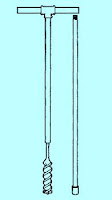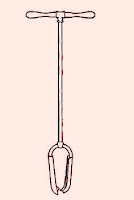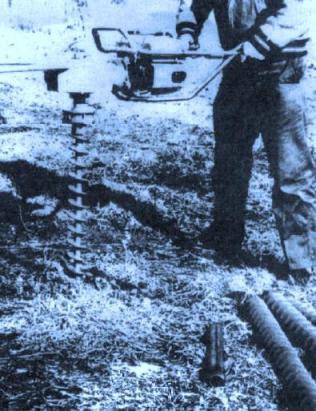Exploratory holes into the soil may be made by hand tools, but more commonly truck- or trailer-mounted power tools are used. in this post hand tools are discussed.
Hand Tools
The earliest method of obtaining a test hole was to excavate a test pit using a pick and shovel. Because of economics, the current procedure is to use power excavation equipment such as a backhoe to excavate
 |
| Undrained shear strength for anisotropic soils. |
the pit and then to use hand tools to remove a block sample or shape the site for in situ testing. This is the best method at present for obtaining quality undisturbed samples or samples for testing at other than vertical orientation (Topmost Fig.). For small jobs, where the sample disturbance is not critical, hand or powered augers (See fig: Helical, Posthole and Gasoline-engine powered hand tools ) held by one or two persons can be used. Hand-augered holes can be drilled to depths of about 35 m, although depths greater than about 8 to 10 m are usually not practical. Commonly, depths are on the order of 2 to 5 m, as on roadways or airport runways, or investigations for small buildings.



I'm wondering what the advantage of soil boring is. I know that people will have their soil turned so that it mixes up all the nutrients and enriches the soil a little bit for the next planting. That's nice that there are hand tools as well as truck-mounted tools to do soil boring though. I would imagine hand tools to be a little less expensive to rent or buy. http://www.unitechdrilling.com/
ReplyDelete